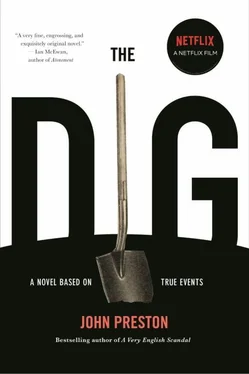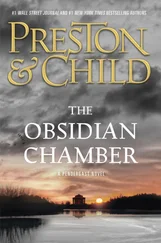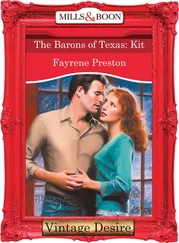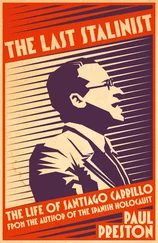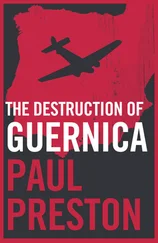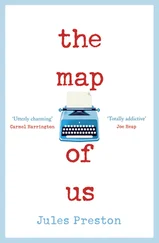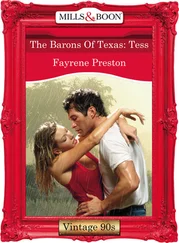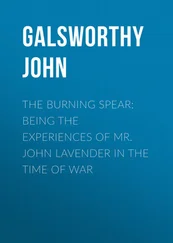The beer had such a delicious peaty taste that I was reluctant to swallow it. Instead, I kept swilling it around in my mouth until the taste had disappeared. Afterwards I took another mouthful and did the same thing.
“Now, let’s think about period, shall we?” said Phillips, sitting forward with one hand planted on his knee.
“As you mentioned before, CW,” said Stuart, “if the boat is roughly contemporaneous with Oseberg, then that would suggest anything between AD 600 and 800. My initial feeling was that we were looking at something nearer the latter end of the scale. However, the jewelry rather changes all that.”
“Yes, yes. Go on.”
“Well, the only comparative jewelry that I can think of is the piece that Kendrick found at Dorchester on Thames in the early twenties. He believed this to date from the early part of the seventh century. Kendrick, of course, was roundly ridiculed for making such a suggestion. The general feeling was that a piece of such intricate workmanship couldn’t possibly be that old. In effect, Kendrick was invited to recant, although he refused to do so. I think we now have to consider the possibility that he might have been right, after all.”
“We may,” said Phillips. “We may indeed have to consider that possibility. Let’s also consider the coin that Brown found before I arrived. This morning, I took it to Cambridge for Kendrick himself to examine. As you know, East Anglia did not have a coin-based economy until the eighth century at the earliest. However, a number of Anglo-Saxon inhumations have been discovered with coins in them dating back to around AD 575. The coins are assumed to have been used for symbolic purposes — most probably for placing in the mouths of the dead in order to facilitate their passage from this world to the next.
“I think it’s fair to say that Kendrick was considerably taken aback when I showed him our coin,” added Phillips with satisfaction. “Frankly, he could hardly believe his eyes. It took me a while to convince him it wasn’t a prank, something a student had knocked up in the lab.”
Stuart began to laugh. His eyes were sparkling. I don’t think I had ever seen him look so happy.
“The first thing Kendrick said was that he was quite certain it wasn’t from East Anglia at all. Although he was only able to give it a cursory examination, he believes it to be a tremiss from Merovingian Gaul, dating from between AD 575 and 625.”
Phillips took another drink and pressed his lips together. “Considering all this, now what do we have? We have a buried Anglo-Saxon ship, almost 100 feet in length, with what appears to be a burial chamber at the heart of it. A burial chamber that would appear to be completely intact. I suppose we have to consider the possibility that both the coin and the gold pyramid were placed there at a later date, but I doubt if even Reid Moir would give that one serious credence. No, the inference must surely be that this is the grave of someone important, and that the jewelry is part of his grave goods.”
“But surely—” I broke in.
“Yes?”
I knew that I must not appear too excitable. That I must make sure my voice was properly measured.
“Well,” I said, “if that is true, and if Professor Kendrick is right, then surely that would alter our entire understanding of the Dark Ages?”
There was a pause after I had finished and I began to wonder if I had said something foolish.
Then Phillips went, “Mmm… it would rather.”
The curtains had been drawn in our bedroom and the beds turned down. Only the bedside light was switched on. Stuart stretched out his arms in front of him. “It’s been quite a day, hasn’t it?”
“Quite a day.”
“You should feel very proud of yourself, darling.”
“Should I?”
“You know perfectly well you should.”
Just as he had done earlier, Stuart came towards me and wrapped his arms around my shoulders. His tweed jacket had a reassuring smell, of solidity and permanence. It was the sort of smell that could banish doubts and fears, possibly forever. I turned my face up towards his, wanting above all to feel his mouth on mine, if only for a moment. It would have been the crowning of a perfect day.
Stuart, meanwhile, was looking over my shoulder towards the window, as if peering through the drawn curtains at the street outside. Without relaxing his grip, he tilted his head down towards mine. We stayed like that for some time. Then he gently extricated himself and went back over to the armchair.
The nonchalance with which Stuart undressed only made my self-consciousness all the more pronounced. He undid his boots, folded his trousers over the arm of the chair and buttoned up his pyjamas. When I got into bed, the sheets were cold against my skin. I had to push my feet down to the bottom of the bed in one movement for fear that they would become stuck halfway. Even then, there was a moment when I doubted if the warmth of my body would be enough to drive the cold away.
“Ready?” he said.
“Ready.”
“Right, then. Sleep well, darling.”
“And you.”
He reached over and turned off the light.
Instead of leaving the car by the squash court, as he had done before, Stuart continued along the track all the way to the mounds and parked beside the shepherd’s hut. The men were already there with their shovels, awaiting instructions.
Everything proceeded as before: the procession from the house, the setting up of Mrs. Pretty’s chair, supplemented today by a golfing umbrella. Before we started, Stuart handed the pyramid to Mrs. Pretty, apologizing for not having done so the day before.
I then continued in the same part of the chamber, while Stuart moved to the westernmost corner. Phillips patroled up and down the edge of the trench, monitoring our progress. An hour or so after we started Stuart called me over. He had uncovered the rim of a large bronze bowl. Inside it, showing up as this circular protrusion in the sand, was what appeared to be the rim of a second, slightly smaller bowl. This second bowl had a definite collar-like formation on one side which might have been the remains of a lid. Rather than try to remove either of the bowls, Stuart decided to leave them there until the ground around had been lowered to the same level.
Soon afterwards came another object — the first of several iron clamps. On the same axis as the clamps was a large, apparently amorphous mass of decayed wood. Stuart believed — and Phillips agreed — that these clamps must have been used in the construction of the burial chamber and that the piece of wood was part of one of the walls, or possibly even the roof.
The sluggishness that I’d felt the day before had not gone away. Although I had slept, I had only managed to do so in a restless, fretful sort of way. In my dreams, the sky was black, with planes obliterating what was left of Sutton Hoo, and probably us as well. It seemed an especially cruel sort of joke that we should be unearthing the remains of one civilization just as our own appeared to be on the brink of annihilation. In the Daily Telegraph that morning, I had read that the Germans were reported to be continuing their build-up of forces in the port of Danzig. A Polish frontier guard had been shot and killed — it was presumed by SS officers stationed in the city. Meanwhile, a doodle by Field Marshal Goering, the head of the German air force, had been analyzed by a handwriting expert. The expert had concluded that the person who had drawn the doodle was feeling “very much in control and rather unresponsive.”
Just before lunch, I came across a mass of folded and stitched leather. It looked just like a pad of unburnt newspaper from a bonfire. Although much decayed, several of the stitches were still intact. Phillips suggested putting it in some water. A bowl was brought and the mass of leather immersed. Nothing happened for a while. Then, very slowly at first, the leather began to unfurl.
Читать дальше
